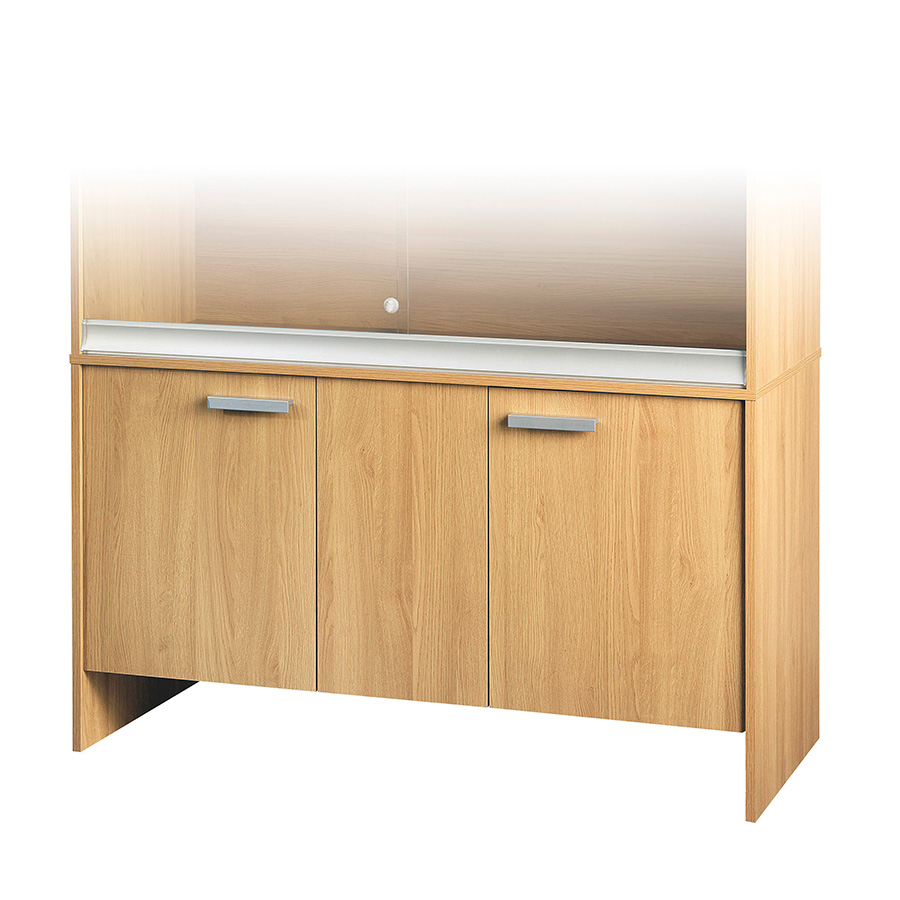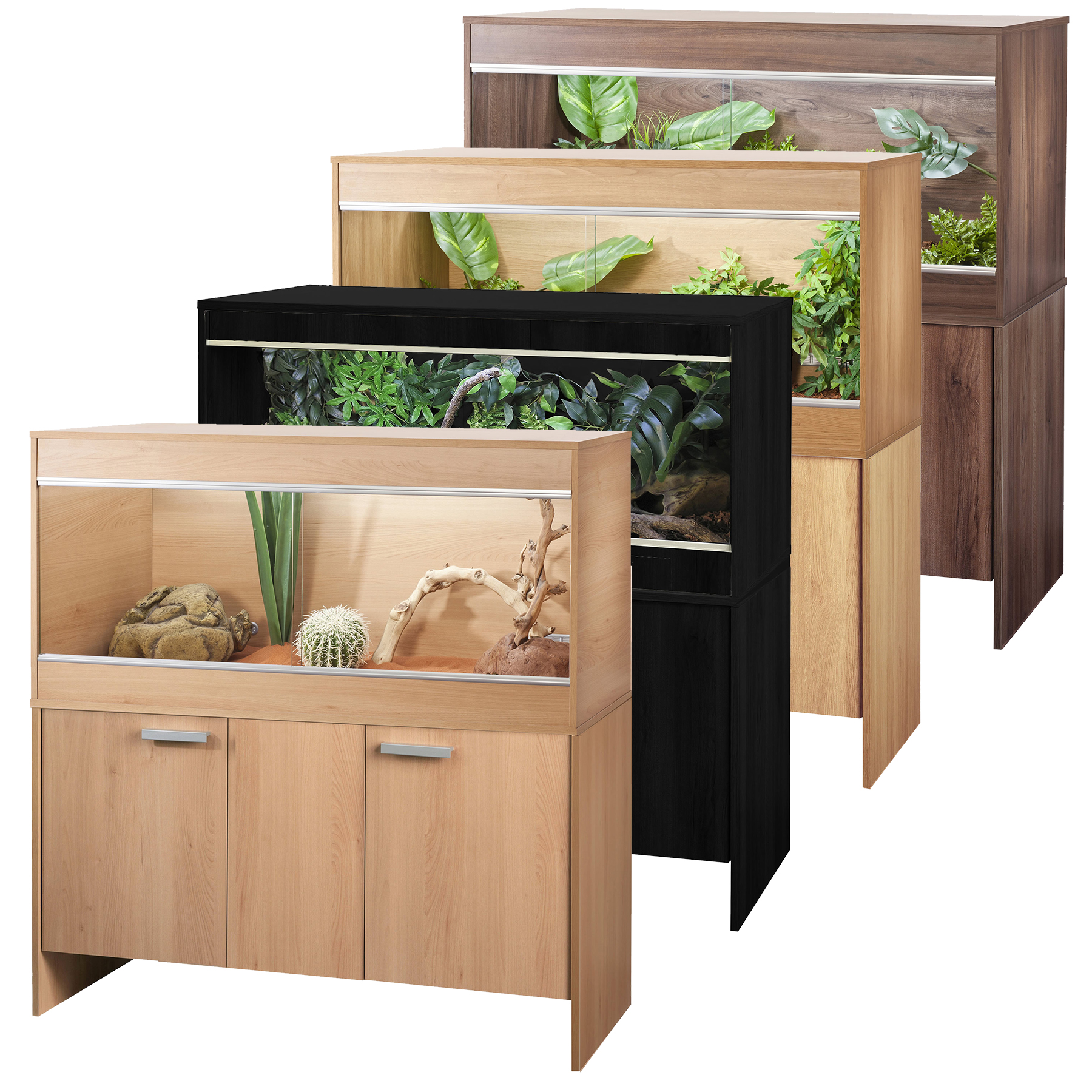Vivarium Cabinet Essentials

A vivarium cabinet is a specialized enclosure designed to create a controlled environment for reptiles, amphibians, and other small animals. It’s a vital piece of equipment for responsible pet ownership, offering a safe and healthy habitat for your creature. Choosing the right vivarium cabinet is crucial for ensuring your pet’s well-being.
Vivarium Cabinet Features
The size, ventilation, lighting, and temperature control are crucial elements of a vivarium cabinet.
- Size: The vivarium cabinet’s size must be large enough to accommodate your pet’s full grown size, allowing for ample space to move around, climb, and explore.
- Ventilation: Adequate ventilation is essential for maintaining proper air circulation and preventing moisture buildup. This is crucial for preventing mold growth and maintaining a healthy environment for your pet.
- Lighting: The vivarium cabinet must provide appropriate lighting for your pet’s species. This can include UV light for reptiles and amphibians, as well as heat lamps for maintaining optimal temperatures.
- Temperature Control: Maintaining a consistent temperature is critical for your pet’s health. You can achieve this using a thermostat-controlled heat mat, a heat lamp, or a combination of both.
Types of Vivarium Cabinets
Vivarium cabinets are available in various materials, each with its advantages and disadvantages.
- Glass: Glass vivarium cabinets offer excellent visibility, allowing you to observe your pet easily. However, they can be more susceptible to scratches and may require extra care to prevent condensation buildup.
- Wood: Wooden vivarium cabinets are often more aesthetically pleasing and can be customized to fit your decor. They offer good insulation and can help maintain a stable temperature. However, they may be more susceptible to moisture damage and require regular cleaning to prevent mold growth.
- Plastic: Plastic vivarium cabinets are lightweight, easy to clean, and relatively inexpensive. However, they may not be as durable as glass or wood and can be prone to scratches.
Choosing the Right Vivarium Cabinet
When choosing a vivarium cabinet, consider your pet’s specific needs and requirements.
- Species: Different species of reptiles and amphibians have varying requirements for temperature, humidity, and lighting. For example, a desert tortoise will need a dry and warm environment, while a rainforest frog will require high humidity.
- Size: Choose a cabinet large enough to accommodate your pet’s full-grown size. This will provide ample space for movement, exploration, and climbing.
- Features: Consider the essential features of the vivarium cabinet, such as ventilation, lighting, and temperature control. Ensure the cabinet meets your pet’s specific needs.
Creating the Perfect Vivarium Environment

A vivarium is a miniature ecosystem that provides a safe and stimulating environment for your pet. By replicating their natural habitat, you can create a space that meets their biological and behavioral needs.
Designing the Vivarium Setup
The foundation of a successful vivarium is a well-designed setup that mimics the natural environment of your pet. This involves choosing the right substrate, providing hiding places, and incorporating enrichment items.
- Substrate: The substrate forms the base of the vivarium and should be chosen based on the needs of your pet. For example, reptiles often prefer a loose substrate like sand or bark chips, while amphibians may thrive in a more humid environment with a substrate like coco coir.
- Hiding Places: Hiding places are essential for providing your pet with a sense of security and privacy. They can be created using natural materials like rocks, branches, or hollow logs, or you can purchase commercially available hides.
- Enrichment Items: Enrichment items are designed to stimulate your pet’s natural behaviors and prevent boredom. Examples include climbing branches, foraging toys, and water features.
Setting Up Lighting, Heating, and Humidity
Creating a healthy vivarium environment requires careful consideration of lighting, heating, and humidity levels.
- Lighting: Providing the right type and intensity of light is crucial for the well-being of your pet. Reptiles, for instance, require a specific spectrum of light for vitamin D3 synthesis, which is essential for bone health.
- Heating: Maintaining the correct temperature gradient is vital. You can use heat lamps, under-tank heaters, or ceramic heaters to provide a warm basking area and a cooler area for your pet to regulate its body temperature.
- Humidity: Humidity levels must be maintained within the appropriate range for your pet. Amphibians, for example, require a higher humidity level than reptiles. You can use misting systems, water bowls, or humidifiers to achieve the desired humidity.
Maintaining a Clean and Hygienic Environment
A clean and hygienic vivarium is essential for preventing diseases and maintaining the health of your pet.
- Regular Cleaning: You should clean the vivarium regularly, removing any waste and uneaten food. The frequency of cleaning will depend on the type of pet and the size of the vivarium.
- Sanitation: It’s important to sanitize the vivarium periodically using a pet-safe disinfectant. This will help to kill bacteria and prevent the build-up of harmful pathogens.
- Water Changes: Change the water in water bowls daily and ensure that the water is fresh and clean.
Vivarium Cabinet Design and Functionality: Pets At Home Vivarium Cabinet

The design and functionality of a vivarium cabinet are crucial for creating and maintaining a thriving environment for your pets. These cabinets are more than just storage units; they are carefully crafted structures that provide a safe, comfortable, and aesthetically pleasing home for your reptiles, amphibians, or invertebrates.
Vivarium Cabinet Design Variations, Pets at home vivarium cabinet
A wide array of vivarium cabinet designs caters to different needs and preferences. Here is a table that showcases some common design variations:
| Design Feature | Description | Advantages | Disadvantages |
|---|---|---|---|
| Doors | Sliding, hinged, or a combination of both | Easy access, space-saving, customizable | May require more effort to open/close, can be bulky |
| Shelves | Adjustable, fixed, or tiered | Flexibility in organizing space, customizable, can accommodate different sizes | Limited space for large enclosures, may be less stable |
| Ventilation Systems | Top, bottom, or side vents, adjustable airflow | Ensures proper air circulation, prevents humidity buildup, customizable | May require more maintenance, can be noisy |
Popular Vivarium Cabinet Brands
Several reputable brands specialize in manufacturing vivarium cabinets, each with unique features and functionalities.
- Exo Terra: Known for its high-quality, customizable cabinets with advanced ventilation systems and multiple tiers for stacking enclosures. Their cabinets are often favored for their durability and sleek design.
- Zoo Med: Offers a wide range of vivarium cabinets, from basic to more elaborate models, with features like built-in lighting, heating, and ventilation systems. Their focus on affordability makes them a popular choice for budget-conscious enthusiasts.
- Reptile Basics: Renowned for its focus on functionality and practicality, Reptile Basics offers cabinets with sturdy construction, adjustable shelves, and easy-to-clean surfaces. Their designs are often minimalist and space-saving.
Vivarium Cabinet Materials
The materials used in constructing a vivarium cabinet significantly impact the overall environment and maintenance.
- Wood: A classic choice for vivarium cabinets, wood offers natural insulation, durability, and aesthetic appeal. However, it requires regular maintenance to prevent moisture damage and mold growth.
- Metal: Metal cabinets, typically made of steel or aluminum, are known for their durability, ease of cleaning, and resistance to moisture. However, they can be susceptible to rust and may require additional insulation for temperature regulation.
- Plastic: Plastic cabinets offer affordability, lightweight construction, and ease of cleaning. However, they may not be as durable as wood or metal and can be prone to scratches and dents.
Pets at home vivarium cabinet – So, you’re thinking about getting a vivarium cabinet for your pet? It’s a great way to create a controlled environment for your scaly friend, but remember, you need to make sure it’s spacious enough! If you’re looking for storage solutions that are both functional and stylish, consider checking out some office furniture media cabinets.
They might not be suitable for your lizard, but they’re perfect for organizing all those extra reptile books and accessories! And hey, maybe you can even convince your pet to chill out in there, just kidding, unless…?
So, you’re thinking about getting a vivarium cabinet for your pet? Cool, but let’s be real, those things can get pretty noisy. Maybe you need something to drown out the chirping, like a Fender Blues Junior extension cabinet to crank up the tunes.
But seriously, a good vivarium cabinet will make sure your pet’s home is comfortable and secure, so you can relax and enjoy the music without worrying about your scaly friend.
